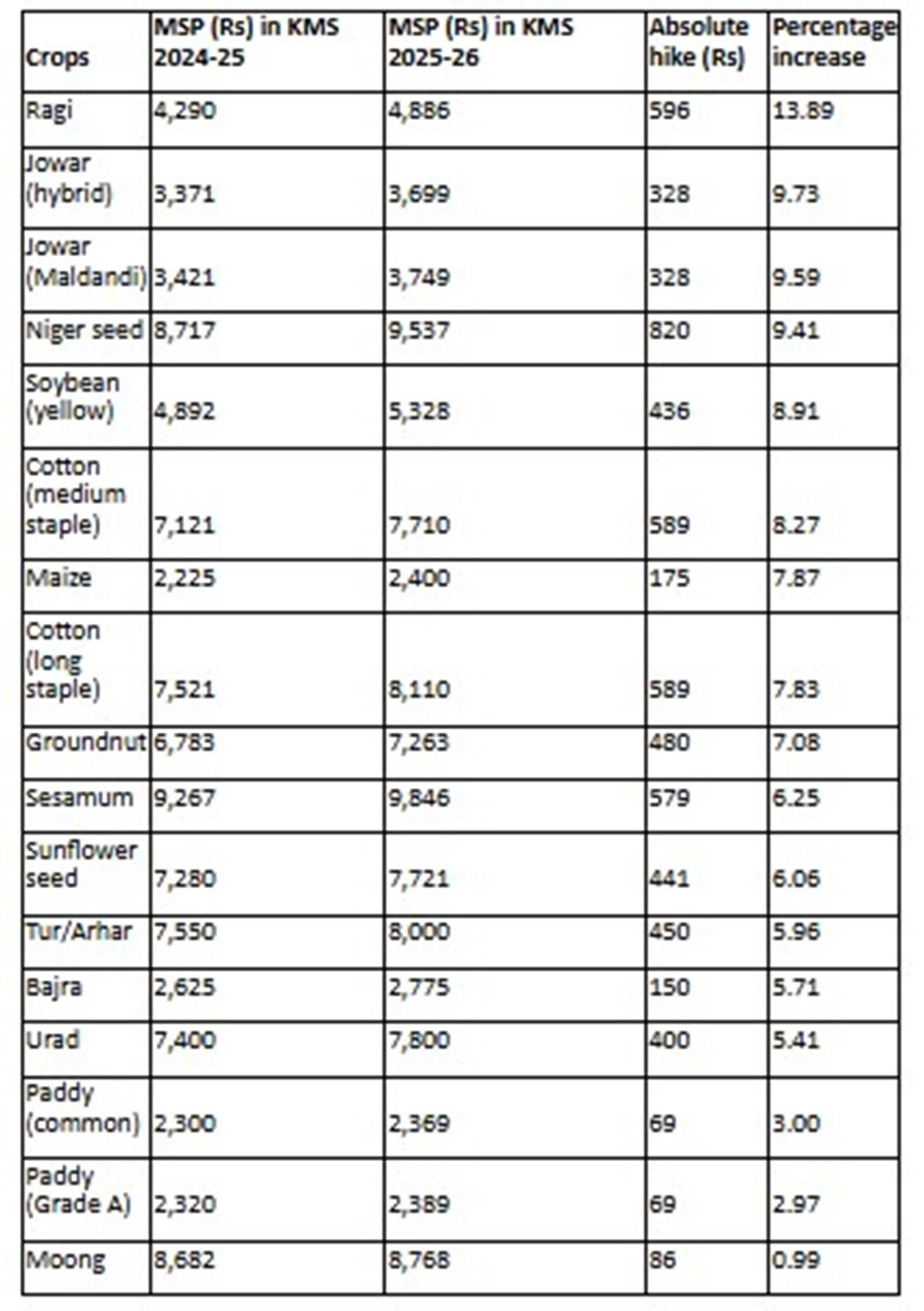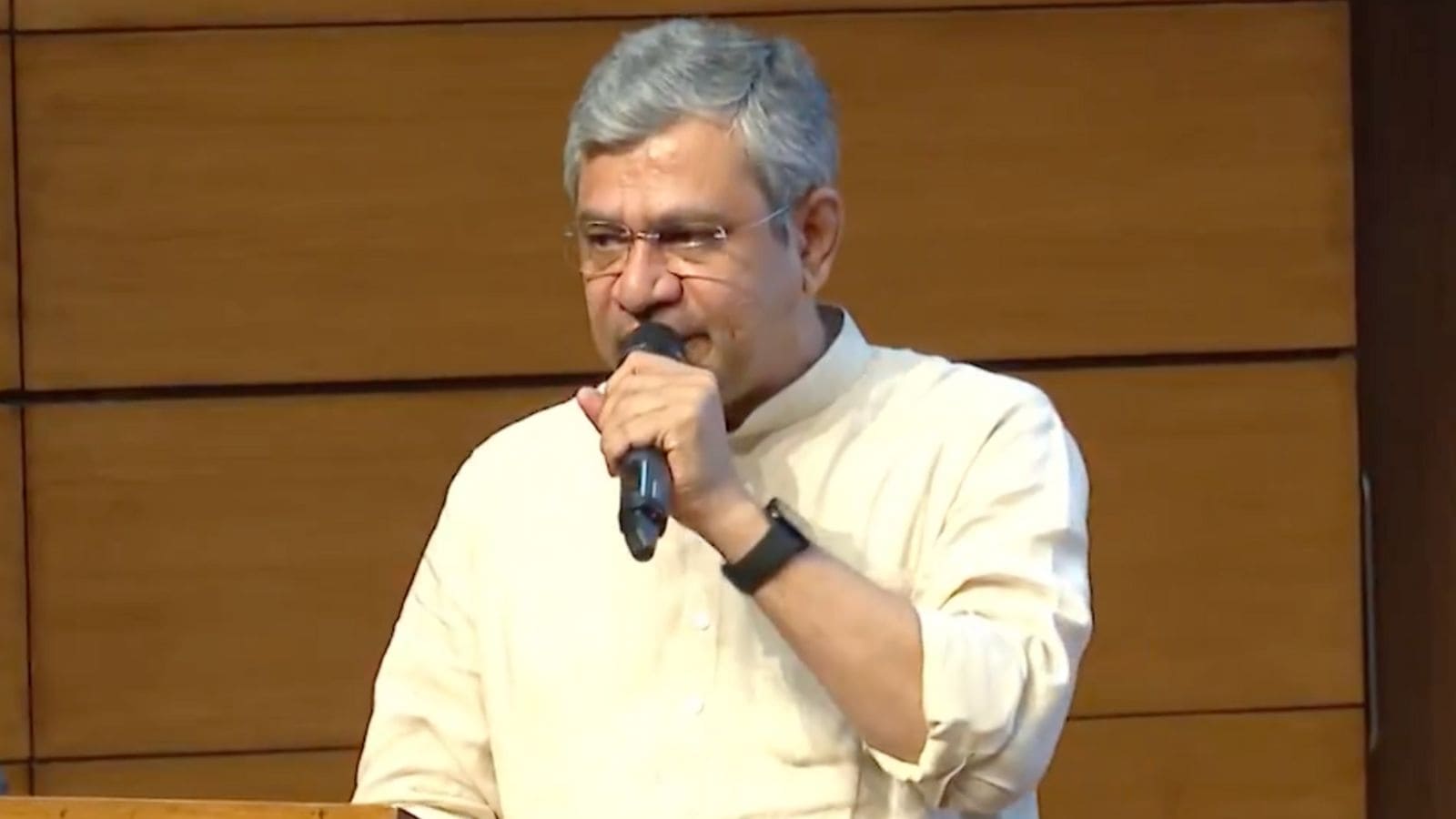The Centre Wednesday announced minimum support prices (MSP) for 14 crops for the 2025-26 Kharif Marketing Season (KMS), with moong seeing the lowest and ragi the highest increase. A decision to this effect was taken by the Cabinet Committee of Economic Affairs, which met under the chairmanship of Prime Minister Narendra Modi.
In percentage terms, ragi recorded a maximum hike of 13.89 per cent to Rs 4,886 per quintal in KMS 2025-26 as against Rs 4,290 per quintal in the last season. Like ragi, another millet crop, jowar also saw almost a double-digit hike in percentage terms in its MSP. The MSP of jowar (hybrid) and jowar (Maldandi) has been fixed at Rs 3,699 and Rs 3,749 per quintal, respectively, which is almost 10 per cent higher as compared to the last Kharif season. The MSP of bajra has been fixed at Rs 2,775 per quintal, which is 5.71 per cent higher compared to the last season’s Rs 2,625 per quintal.
In recent years, the government has been promoting millet crops, including ragi and jowar, and has declared them as Shree Anna. Ragi accounts for just 0.51 per cent of the gross cropped area of the country and is mainly grown in Karnataka, Tamil Nadu and Maharashtra. Major jowar producing states are Maharashtra, Karnataka, Rajasthan, Tamil Nadu and Uttar Pradesh.
VIDEO | Delhi: Here’s what Union Minister Ashwini Vaishnaw (@AshwiniVaishnaw) said during Cabinet Briefing:
“Today, we will discuss the five most important decisions taken by Union Cabinet. Two big decisions are taken for Farmers’ welfare. These are MSP for Kharif crops and… pic.twitter.com/lTs5QDWzDn
— Press Trust of India (@PTI_News) May 28, 2025
Moong, a pulse crop, saw the lowest hike of just 0.99 per cent—to Rs 8,768 per quintal in KMS 2025-26 from Rs 8,682 per quintal during the last season. Moong is grown in Rajasthan, Maharashtra, Madhya Pradesh and Karnataka.
Like moong, paddy has also seen a low hike in MSP. The MSP for paddy (common) and paddy (Grade A) has been fixed at Rs 2,369 and 2,389 per quintal, respectively, which is just 3 per cent higher compared to the last season. The reason for the low hike in MSP for paddy is that the government has record stock of rice in the Central Pool. As per the Food Corporation of India (FCI), 381.47 lakh metric tonnes (LMT) of rice and 318.73 LMT of unmilled paddy were available in the Central Pool as on May 1, 2025. Taken together (rice and unmilled paddy), the total rice stock would be 595 LMT.
Among oilseeds, the MSP of niger seed has been fixed at Rs 9,537 per quintal— 9.41 per cent higher than the last season; and soyabean (yellow) at Rs 5,328 per quintal— 8.91 per cent higher compared to the last season. The MSP of groundnut and sunflower seed has been increased by 7 per cent and 6 per cent, respectively.
The MSP of cotton (medium staple) and cotton (long staple) has been increased by 8.27 per cent and 7.83 per cent, respectively.
In absolute terms, the highest increase in MSP over the previous year has been for niger seed (Rs 820 per quintal) followed by ragi (Rs 596 per quintal), cotton (Rs 589 per quintal) and sesamum (Rs 579 per quintal).
Story continues below this ad
Last year, the MSP for these 14 Kharif crops was hiked in the range of 1.4-11.54 per cent.
In a separate decision, the Union Cabinet chaired by PM Modi approved the continuation of the Interest Subvention (IS) component under the Modified Interest Subvention Scheme (MISS) for the financial year 2025-26, and approved the required fund arrangements. Under MISS, short-term credit is provided to farmers at an “affordable interest rate” through the Kisan Credit Card (KCC). “No changes have been proposed in the structure or other components of the scheme,” said an official statement.
 MSP (Rs per quintal) for Kharif Marketing Season (KMS)
MSP (Rs per quintal) for Kharif Marketing Season (KMS)



